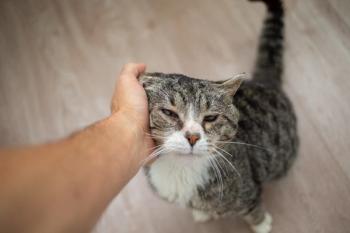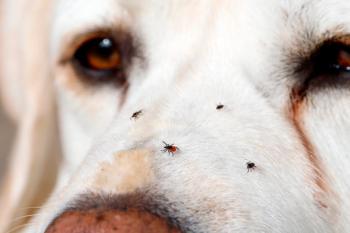
Feline heartworm prevention misconceptions
During this interview with dvm360, Lindsay Starkey, DVM, PhD, DACVM (Parasitology), shares some of the common misconceptions she hears surrounding feline heartworm prevention
According to the American Heartworm Society, only 5% of cats are on year-round heartworm disease prevention.1 Although there can be many reasons that these patients are not being given year-round heartworm disease prevention, one thing veterinary teams can do to help is discuss common misconceptions with clients. But what are they?
In this video with dvm360 prior to her lectures at the Veterinary Meeting & Expo (VMX), Lindsay Starkey, DVM, PhD, DACVM (Parasitology) shared the common misconceptions she hears when it comes to heartworm prevention in feline patients.
Below is a partial transcript
Linsday Starkey, DVM, PhD, DACVM (Parasitology): So there are a couple of big misconceptions about just vectors and vector control in general when it comes to cats, and they kind of center around the same thing, that the cat is at little to no risk for interactions with vectors because they live an indoor, or predominantly indoor, lifestyle, so fleas and mosquitoes and ticks can't come inside, therefore my cat is safe. Absolutely not true. I catch mosquitoes in my house routinely, and they can even bite through the screen window. If you have a cat that likes to sunbathe and press its body as closely to the outside as possible in that window, fleas obviously just reside indoors just fine.
So if you get that infestation started, it could absolutely be a problem. In my own personal cat, when I was in veterinary school, [my cat] got a flea infestation because I got a dog and he was on good flea control, but [my] cat wasn't, and so [the] cat turned into the flea reservoir in the house. And then ticks too can hitch a ride indoors. Some ticks actually do survive indoors. And then that indoor only cat is rarely indoor only. They like to try to go outside and escape on you, or maybe they actually do have a Catio, or go on leash walks, or just get to go outside, but predominantly spend their time inside, and therefore the owner classifies them as indoor only because of the way we phrase that question.
Reference
- Take 5 on Feline Heartworm Disease. American Heartworm Society. Published 2025. Accessed February 3, 2025. https://www.heartwormsociety.org/resources/vet/infographics/632-take-5-on-feline-heartworm-disease
Newsletter
From exam room tips to practice management insights, get trusted veterinary news delivered straight to your inbox—subscribe to dvm360.






